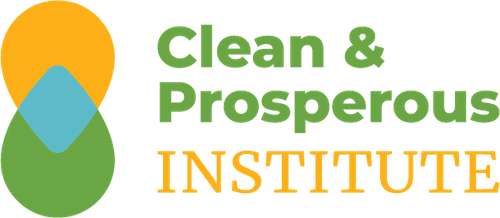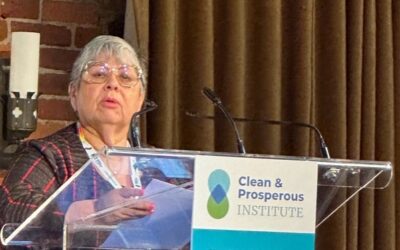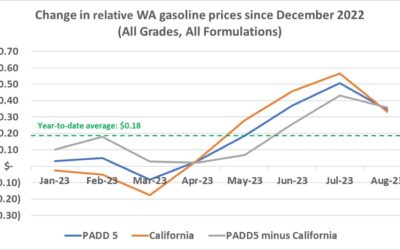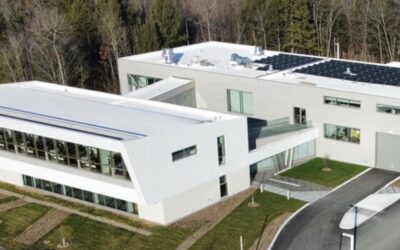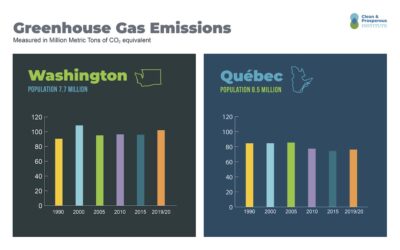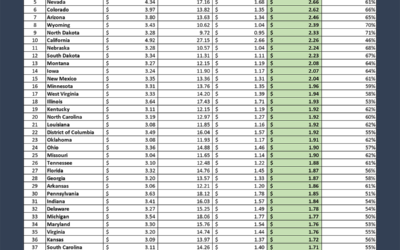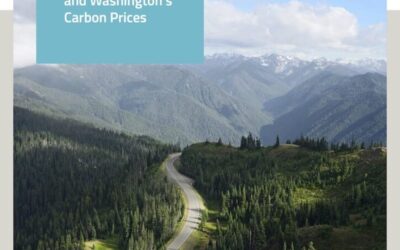All Stories
Is carbon the new fur?
When French-Canadian fur trapper Simon Plamondon traveled from Québec to the wilds of the Pacific Northwest in 1820, he probably didn’t envision that 200 years later descendents of his Cowlitz Tribe hosts would travel with the Clean & Prosperous Institute to visit...
Call for nominations
Governor Jay Inslee presented the first annual David & Patricia Giuliani Clean Energy Entrepreneur Award to Kenworth Truck Company. The second award winner was Myno Carbon. The third award presentation will be at our upcoming Future of Carbon Policy Forum, and nominations are now open.
Do Climate Commitment Act allowance prices get passed through to the pump?
Compared to a simple pass-through assumption on allowance prices (non-consigned average $53.32 through August’s APCR auction, translating to 42 cents per gallon of gasoline), the WA vs. OR year-to-date average of 27 cents per gallon indicates around 70% pass-through. This level of pass-through is consistent with the range described in the peer-reviewed literature.
What can Québec teach us about R&D?
The Clean & Prosperous Institute recently led a Study Mission delegation visit to Québec City and Montréal, to learn from government ministries and private businesses about Québec’s experience with Cap-and-Invest implementation, and how it has catalyzed...
Fleet Decarbonization Accelerator – Enrollment is open
“We’re not sure about electrifying our fleet this year.” “We want to go electric, but don’t know where to start.” “We’re ready to go… we just need an action plan.” Fleet managers know that electric vans, trucks, and semis are more efficient to operate and maintain,...
What can Québec teach us about trucks & buses?
On the recent Clean & Prosperous Institute Study Mission to Québec, we were impressed with the climate commitment demonstrated by everyone we met. Already Québec has the lowest per capita carbon emissions in Canada – half the national average. And they are...
Pourquoi Québec?
Recently the Clean & Prosperous Institute led a delegation of government officials and business leaders to Québec to learn from their decade of experience with Cap-and-Invest, and visit clean energy facilities to get a firsthand look at how Québec is transitioning...
State Rankings of Fuel Savings by Switching to Electric Vehicles
Thinking about linking
Is bigger better? Are the more always the merrier? Do economies of scale apply to carbon emissions markets? What other benefits may come Washington’s way if the state links its carbon emissions market with the larger Western Climate Initiative marketplace that...
